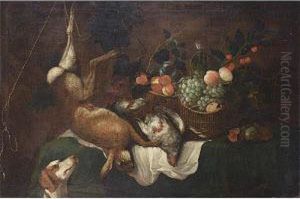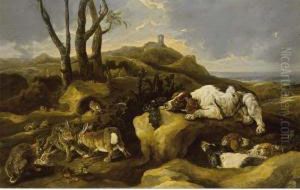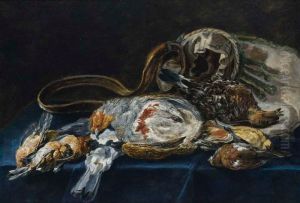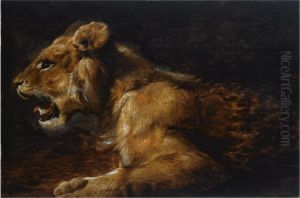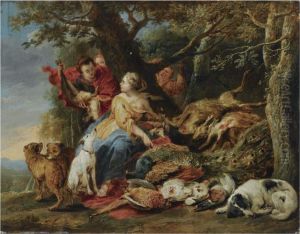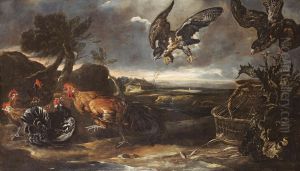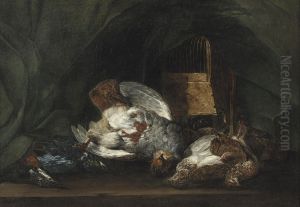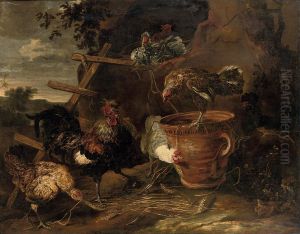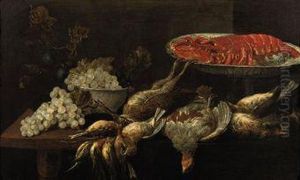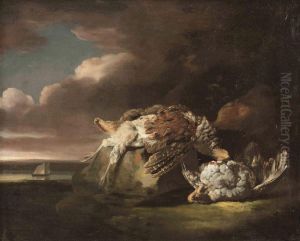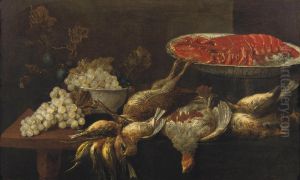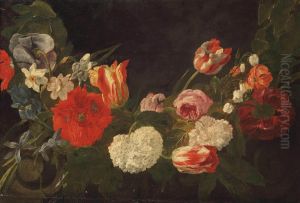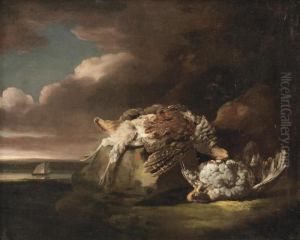Joannes Fijt Paintings
Joannes Fijt, also known as Jan Fyt or Jean Fijt, was a Flemish Baroque painter, draughtsman, and etcher, born in Antwerp in 1611. Fijt was known especially for his detailed depictions of animals, still life, and hunting scenes. His work is characterized by a dynamic representation of texture, light, and composition, reflecting the richness of nature.
Fijt studied under the prominent artist Frans Snyders, who was renowned for his animal and still life paintings. Snyders played a significant role in Fijt's development as an artist, and the influence of his teacher is evident in Fijt's early works. Fijt became a master in the Antwerp Guild of St. Luke by 1629, marking the beginning of his professional career as an independent artist.
After becoming a master, Fijt traveled to Paris and then to Italy, where he was particularly influenced by the work of other artists who specialized in still life and animal subjects. His Italian sojourn was crucial in the development of his personal style. He was particularly impressed by the work of the Bolognese school and the use of light and shadow to create depth in a composition.
Upon returning to Antwerp around 1641, Fijt established a studio and began producing the works for which he is best known. His paintings typically feature an array of animals, often accompanied by a lush backdrop of foliage, fruits, and flowers. He was adept at capturing the textures of fur and feather, which brought his subjects to life and earned him considerable acclaim.
Fijt's paintings were highly sought after by collectors and patrons, and his success allowed him to live comfortably. He was also a teacher, passing on his techniques and style to the next generation of artists. Among his pupils was Pieter Boel, who would also become a prominent animal painter.
Joannes Fijt's contributions to the genre of animal painting were significant, and his work had a lasting impact on the development of still life painting in the Low Countries. His artistry continued to be influential after his death in Antwerp in 1661. Fijt's legacy is preserved in the works held by various museums and collections around the world.
